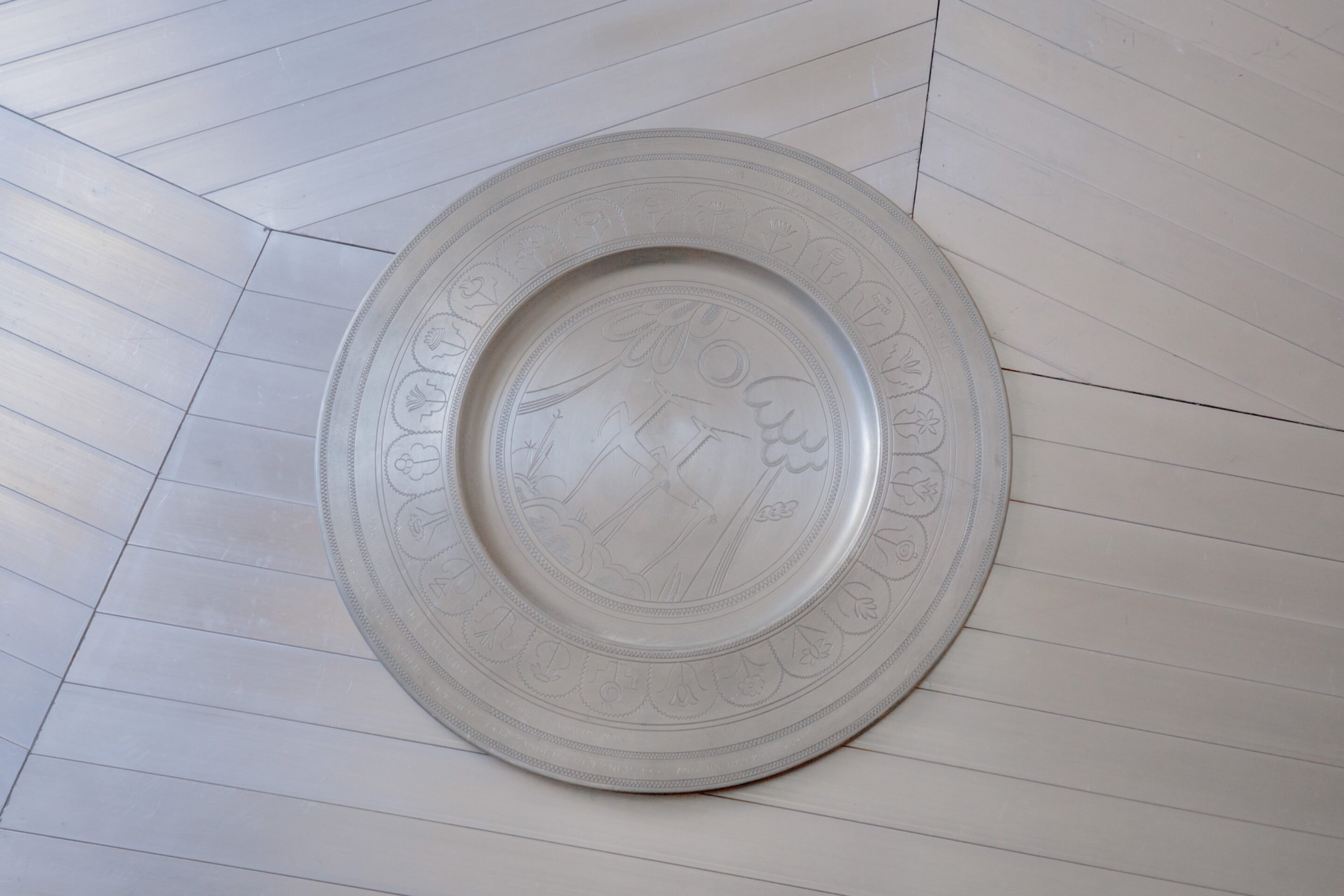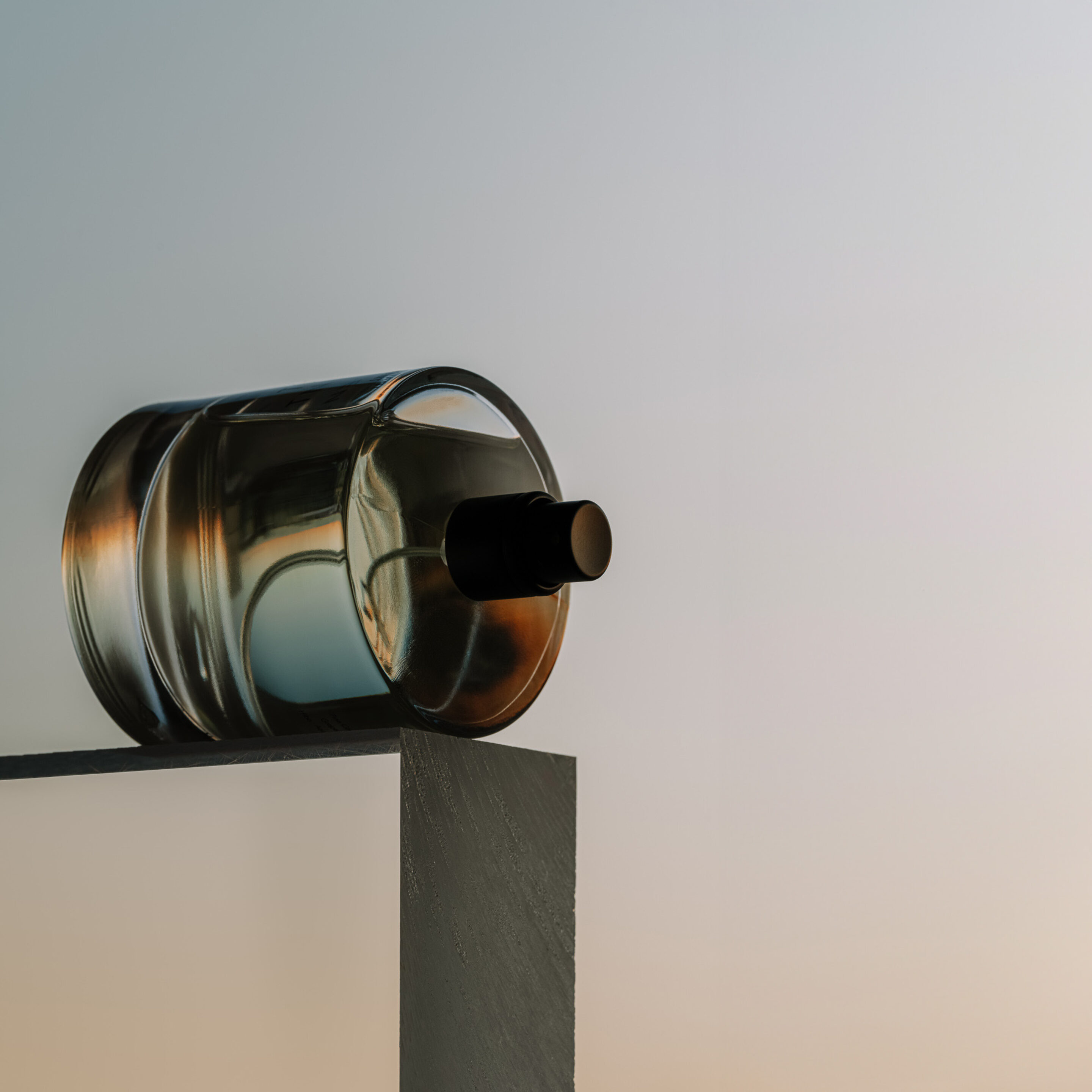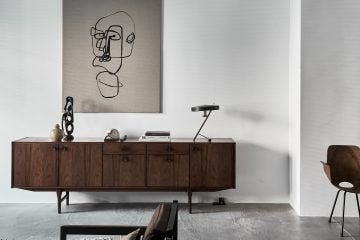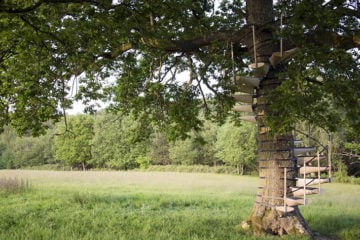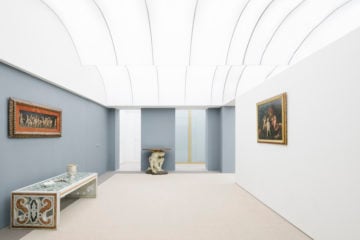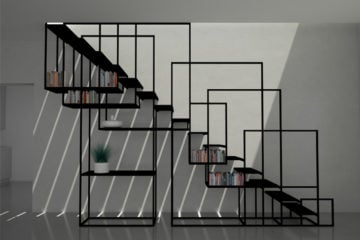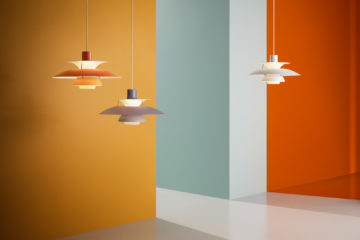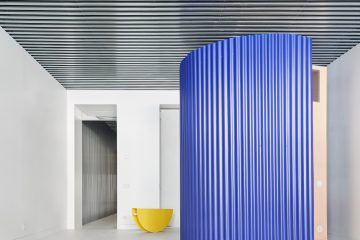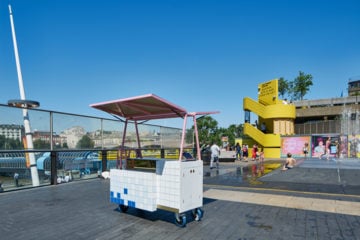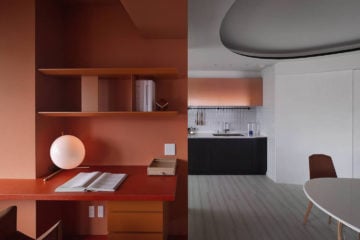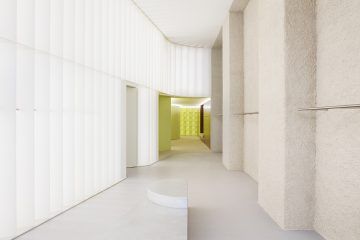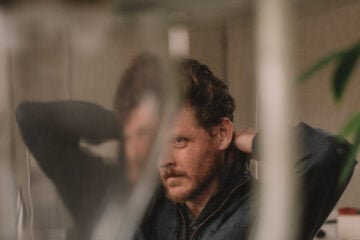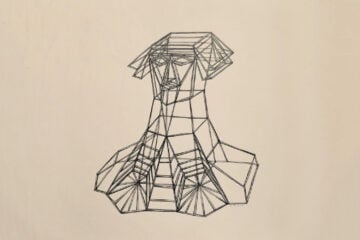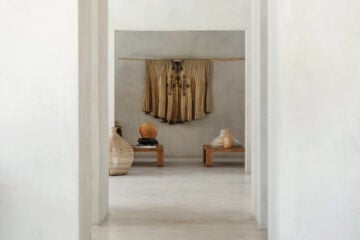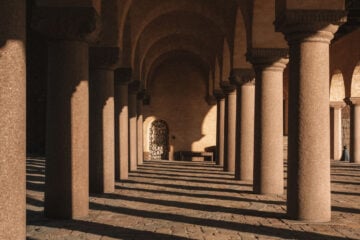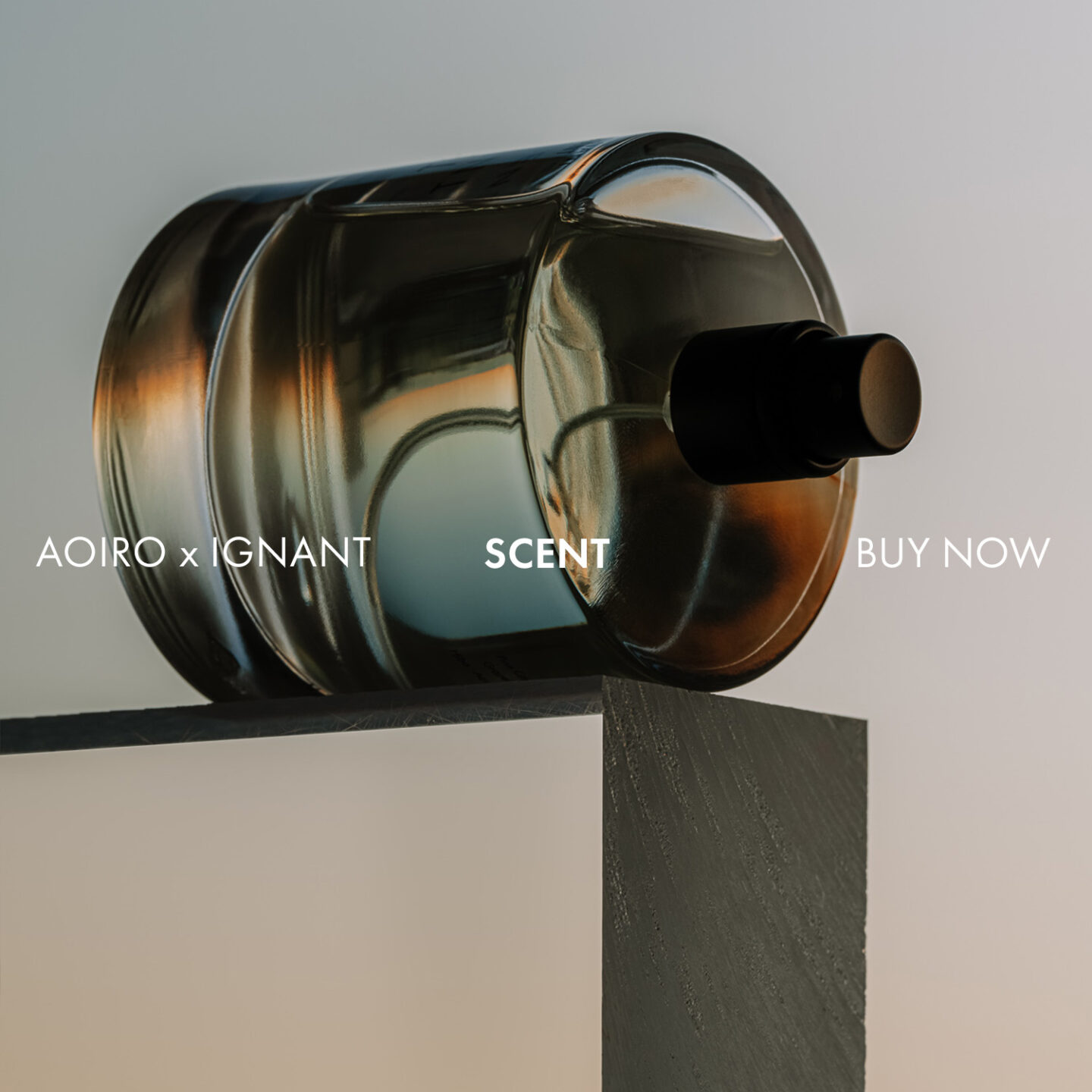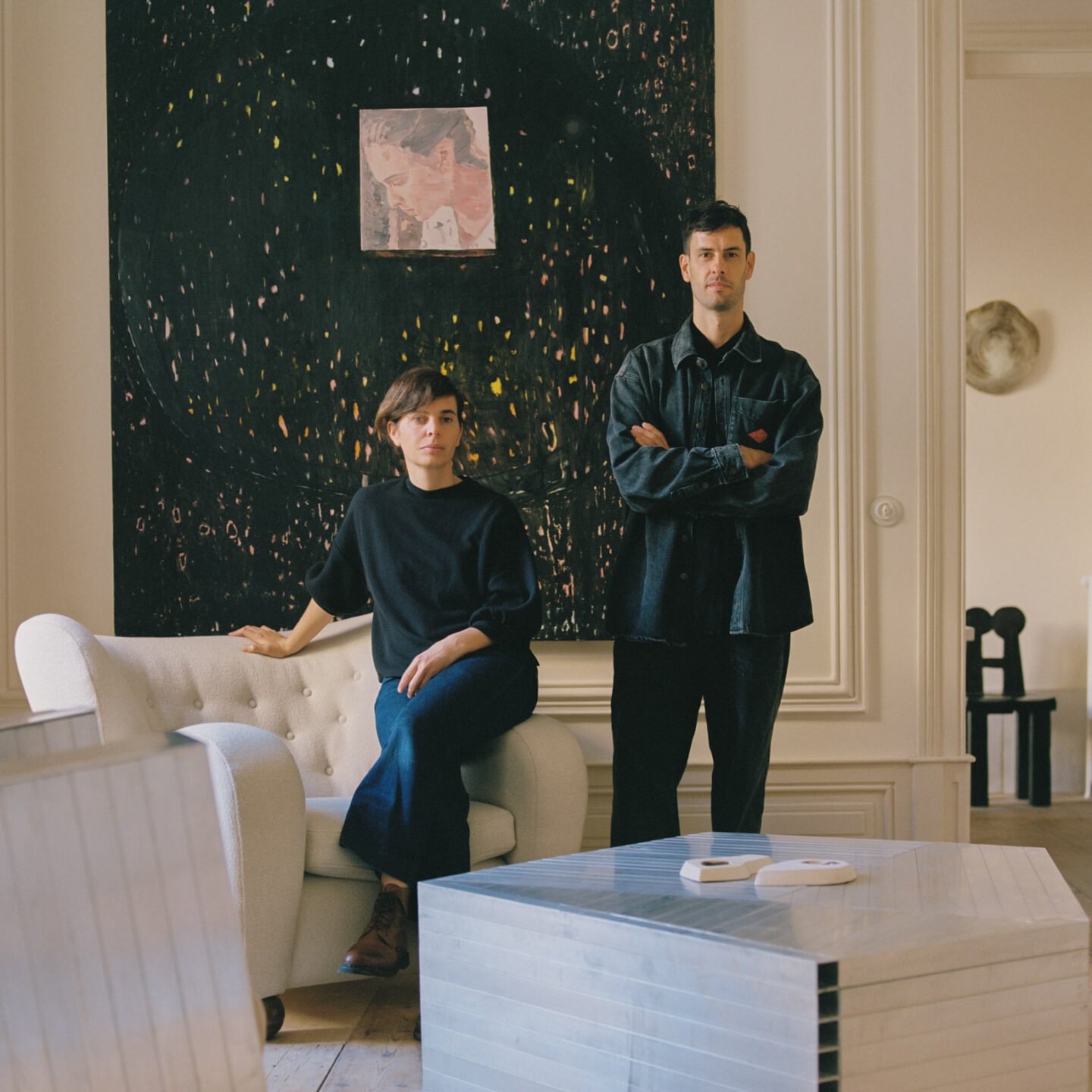
Garcé & Dimofski: Exploration Rooted In Craft
- Name
- Garcé & Dimofski
- Images
- Monika Mroz
- Words
- Monika Mróz
Engaging in a wide range of activities and ventures, Oliver Garcé and Clio Dimofski defy conventional categorizations of what a design studio or an art gallery should be. Operating from their space in Lisbon that doubles as their home and an exhibition space, they continuously explore new languages of design — both independently and as curators for the most sought-after makers in the design community. We recently had the opportunity to sit down with the creative duo at their Lisbon apartment, exploring their vision of crafting exploratory objects that are always made with respect to craftsmanship.
Could you say a few words about your background and how you ended up in Lisbon?
We both studied architecture and interior design, and after a short time spent in Beijing after our studies, we came back to Paris to work for architectural offices. Clio worked for Shigeru Ban, and I started working for Pierre Yovanovitch. Sometime after that, Clio joined me at Yovanovitch’s atelier in Paris. We were sent to New York to open his new studio. Eventually, we worked there for a year and a half. At some point, we decided to return to Europe to open our own studio, which is in Lisbon today. For us, the choice of Lisbon was mostly because of its strong connection to craft. The city has a vibrant, constantly evolving creative scene which gives a lot of space for new projects and creatives from all over Europe. It has become a creative hub.
You moved to your current studio apartment over a year ago. Could you say a bit more about the space and the renovation work it underwent?
The building we live and work in now has a specific structure. It is called Pombaline and represents an early anti-seismic design. A flexible wooden structure is incorporated into the walls and floors, which is then covered by prefabricated elements, mainly made of wood and concrete. It’s also one of the first semi-industrial buildings, which shows in its facade: the tiles covering the building were made in an industrial fashion, as opposed to the handmade tiles covering other buildings in the city. As its construction started at the beginning of the 20th century, the building is more than a century old, which was the main challenge for us when renovating our apartment. Our main goal was to restore the building to preserve as many original elements and materials as possible: doors, screens, and ceilings. To achieve all of that while also building the comforts of the modern apartment was the biggest challenge.
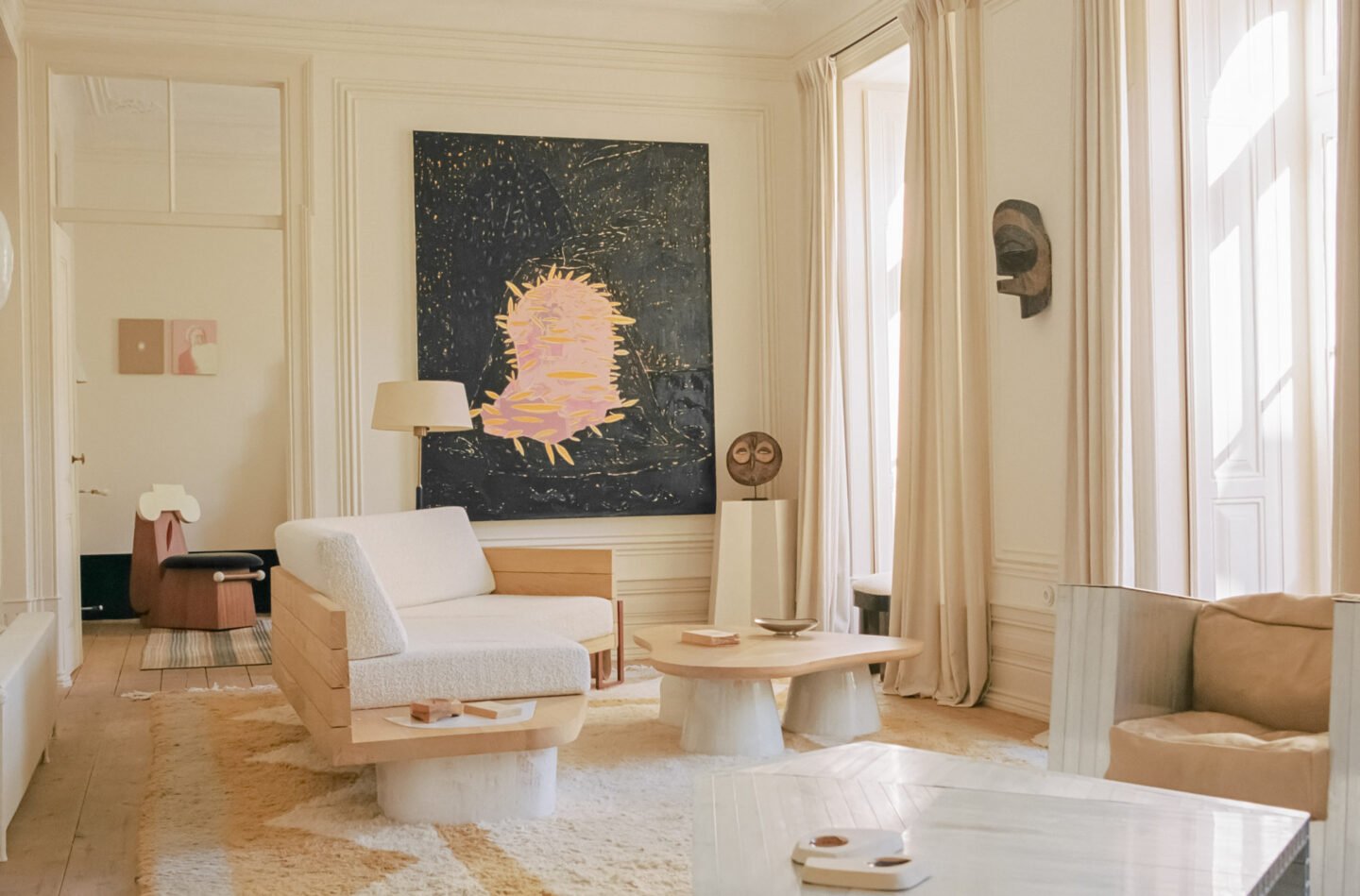
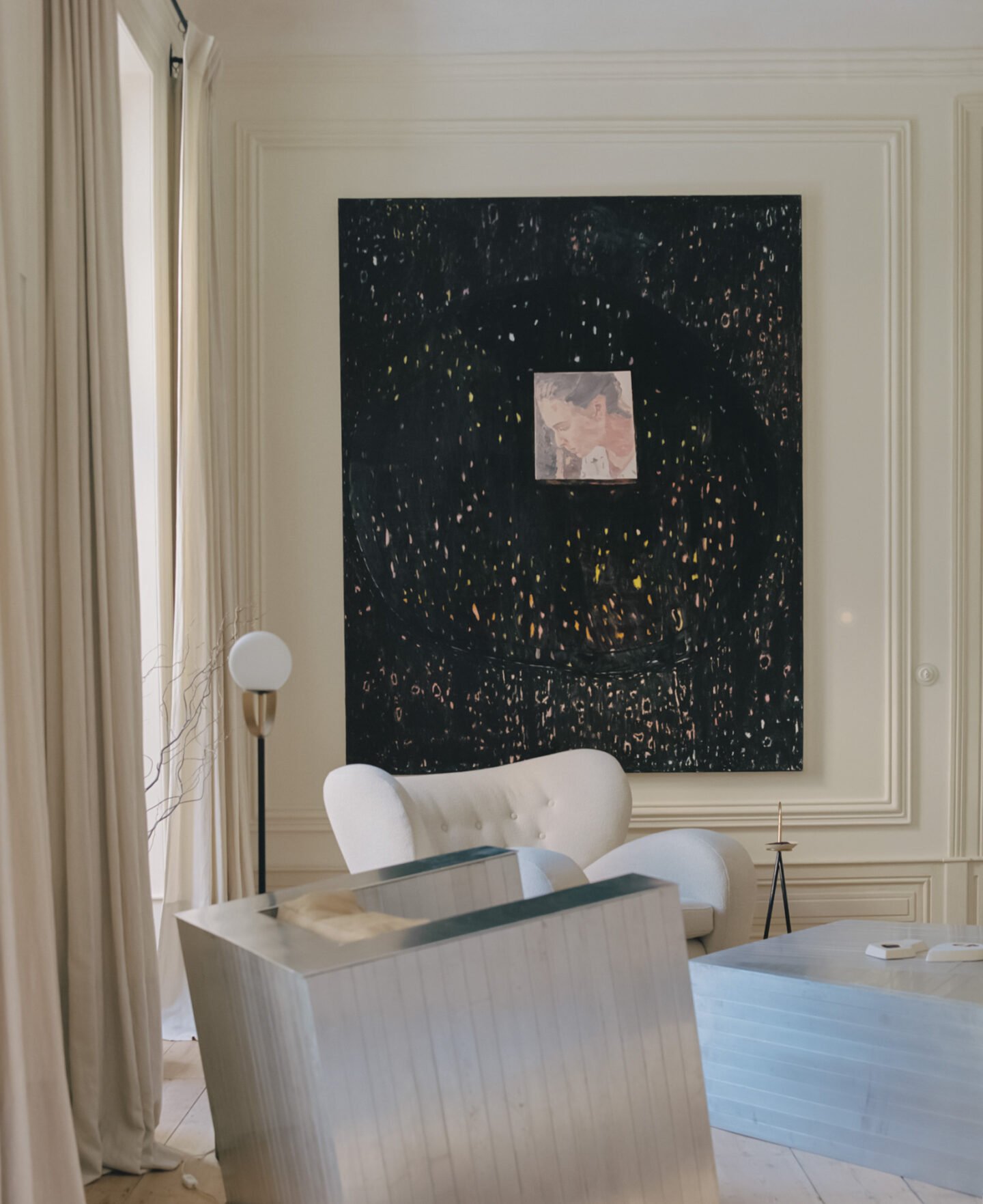
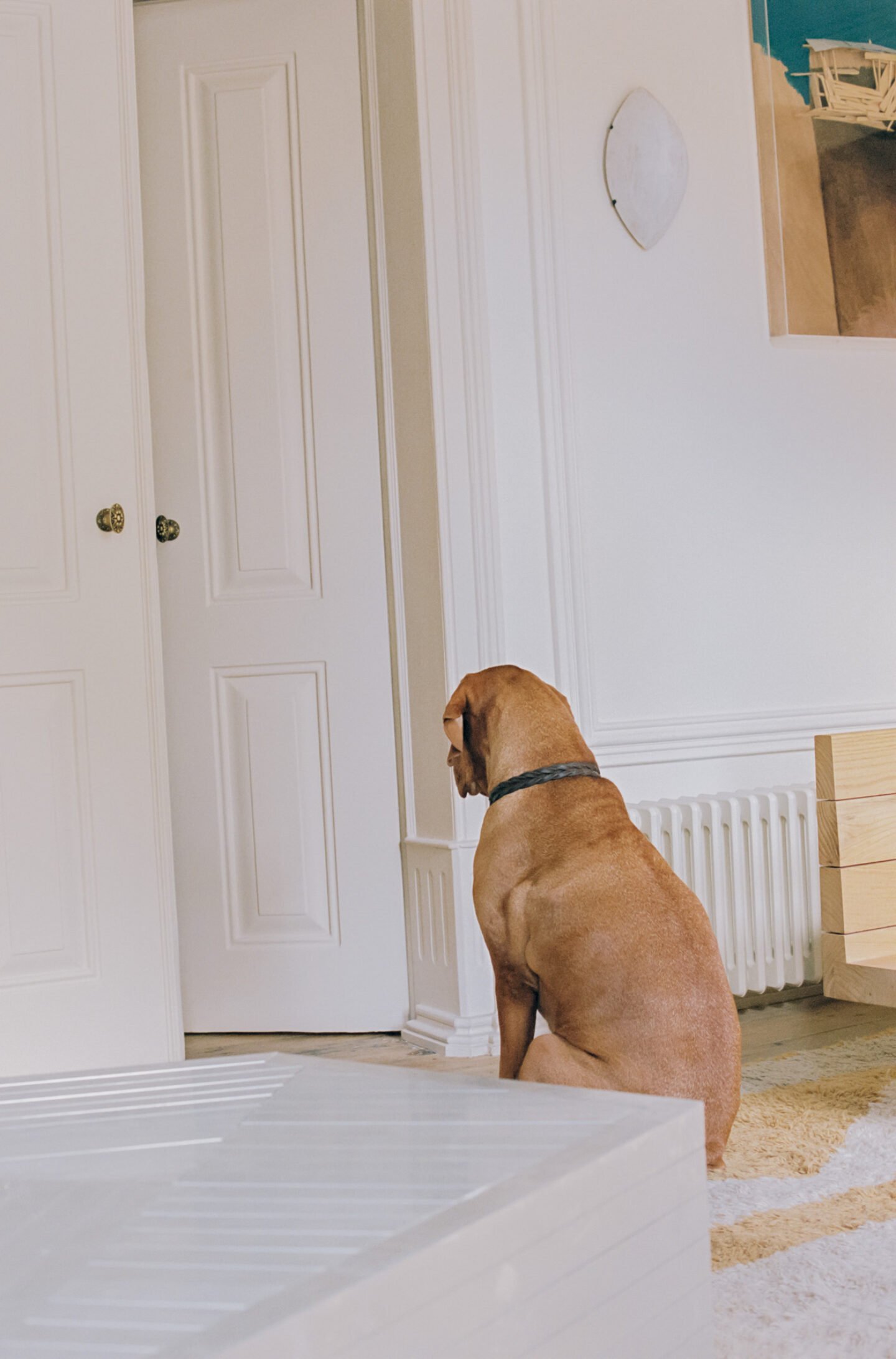
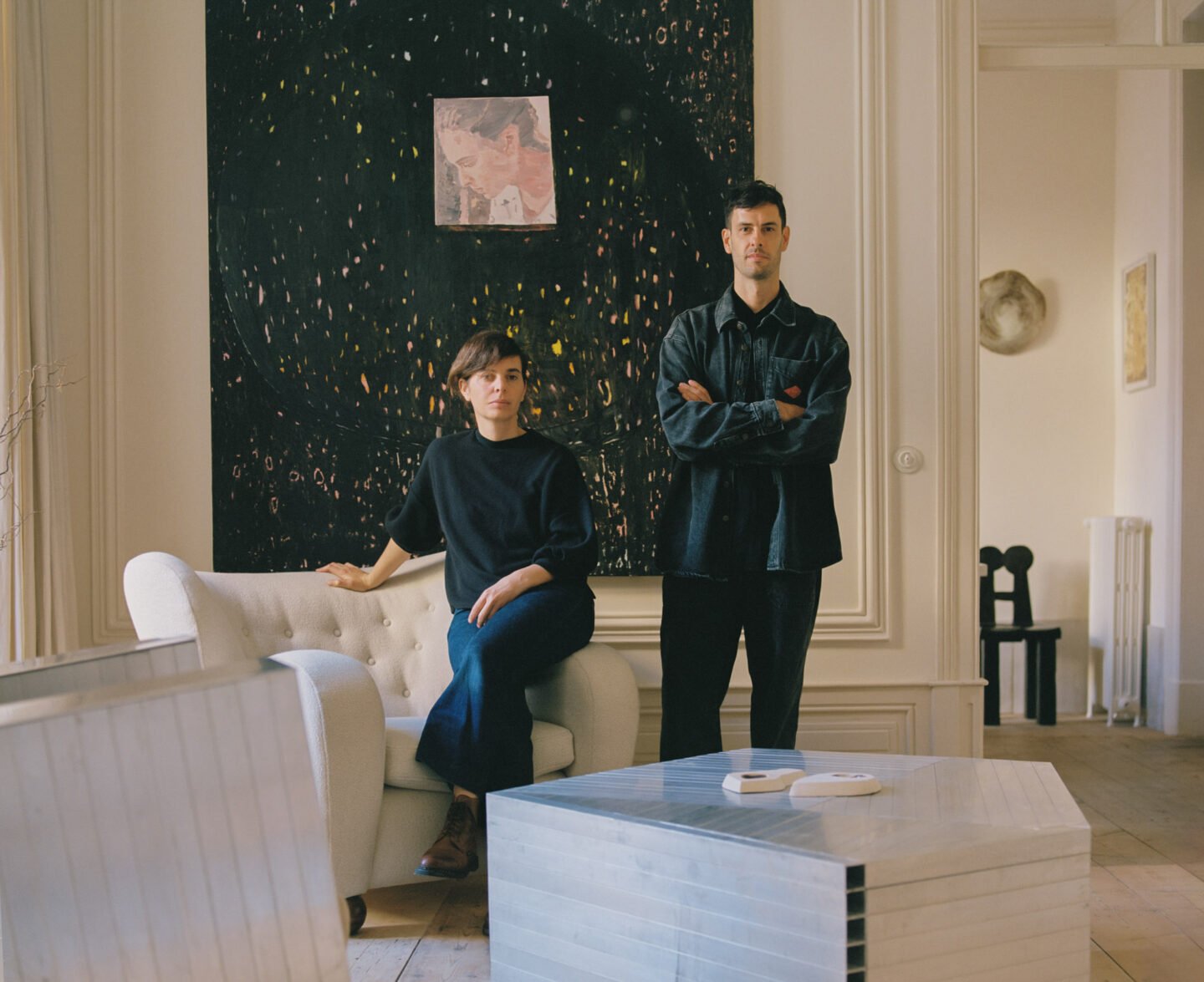
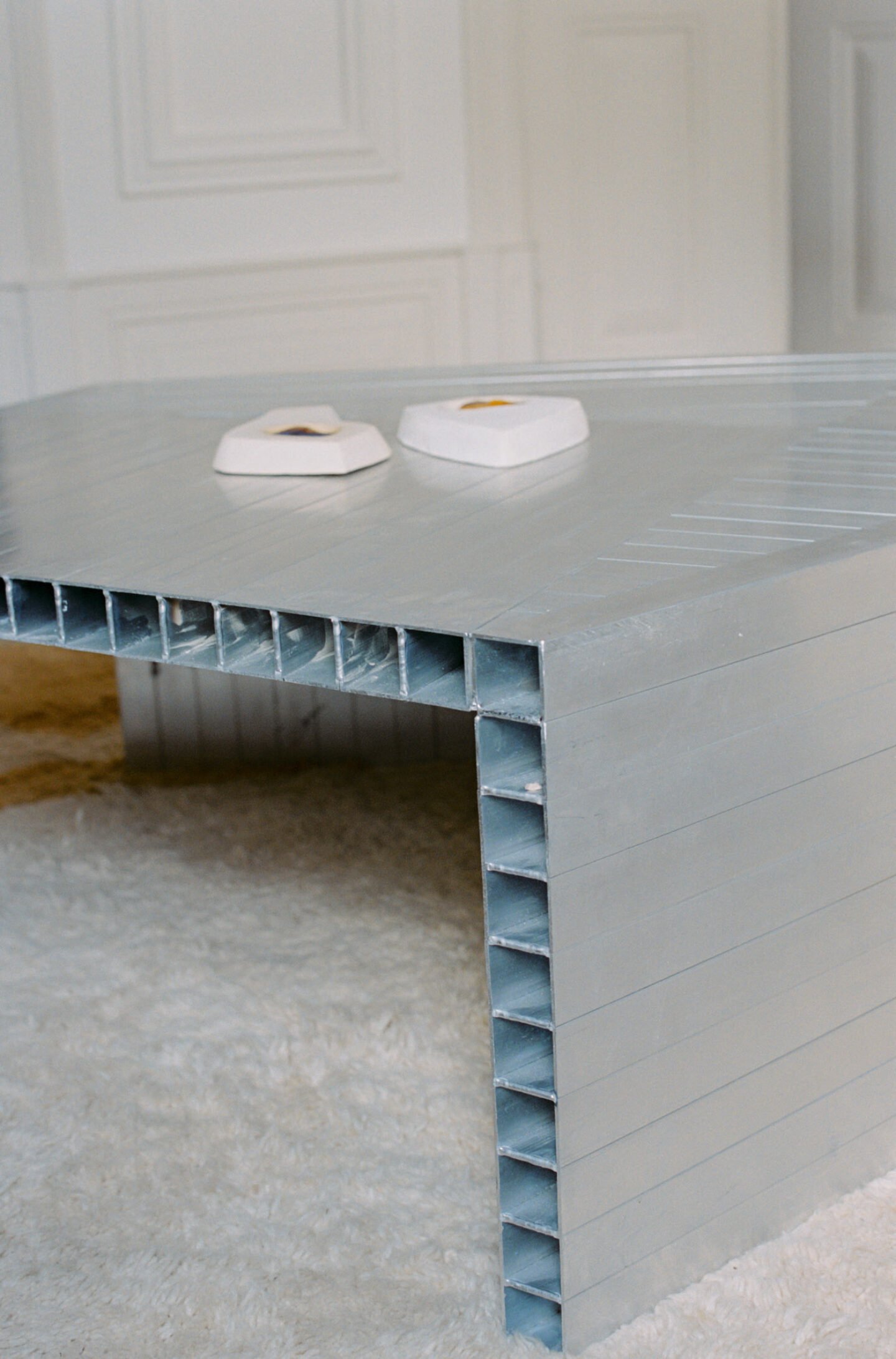
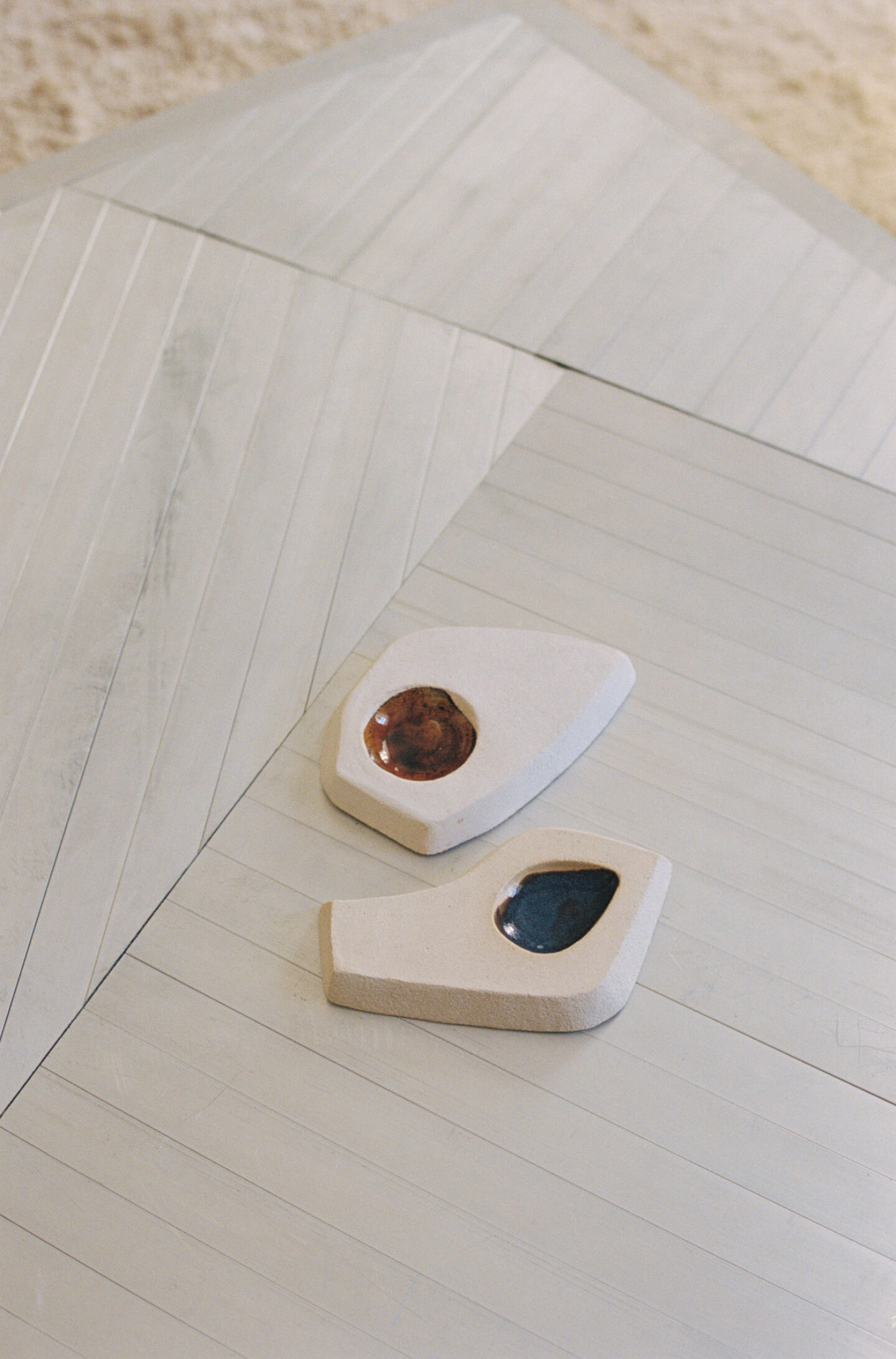
And what about the interior? What were you going for? And what would you say was your direction in terms of style?
Our main objective when planning the interior was to emphasize Portuguese crafts and install these crafts into our design aesthetic. This is why you can see a lot of ceramic elements here, such as bespoke ceramic tiles. We also wanted to add a touch of local, sustainable woodwork while preserving the already existing wooden elements.
Obviously, this place works both as a private apartment and an exhibition space, so there are a lot of pieces from the artists who you represent as a gallery curator.
Yeah, definitely. Currently, you can see a lot of pieces from Studio Haos in our space. We met them when we first arrived in Lisbon and we find their practice very interesting, as they are also both designers and craftsmen. They make all of their pieces by themselves, controlling the process from A to Z. The collection we display in our apartment is radical because of its raw, contrasting material while at the same time having a sophisticated touch, where all the elements have a particular purpose. To observe these progressive, contemporary pieces in the historical environment of our space is very interesting for us.
How do you find a balance in having an apartment that serves as both your private life and your working space?
From the beginning, we never thought it would be challenging or unnatural. Our home is a space that we are glad to invite other people for collaboration and exchange. It doesn’t really matter if you can see our private areas, such as the bedroom or the bathroom—they are all part of our aesthetic and creative process. Instead of coming to an isolated exhibition space, we invite guests to discuss and exchange ideas. This makes the narrative about the artists and designers we represent more complex and interesting.
It also seems to tie together all of the different activities you do as a duo, not only representing other artists but also working on products and interiors yourself.
Yes, it all comes together!
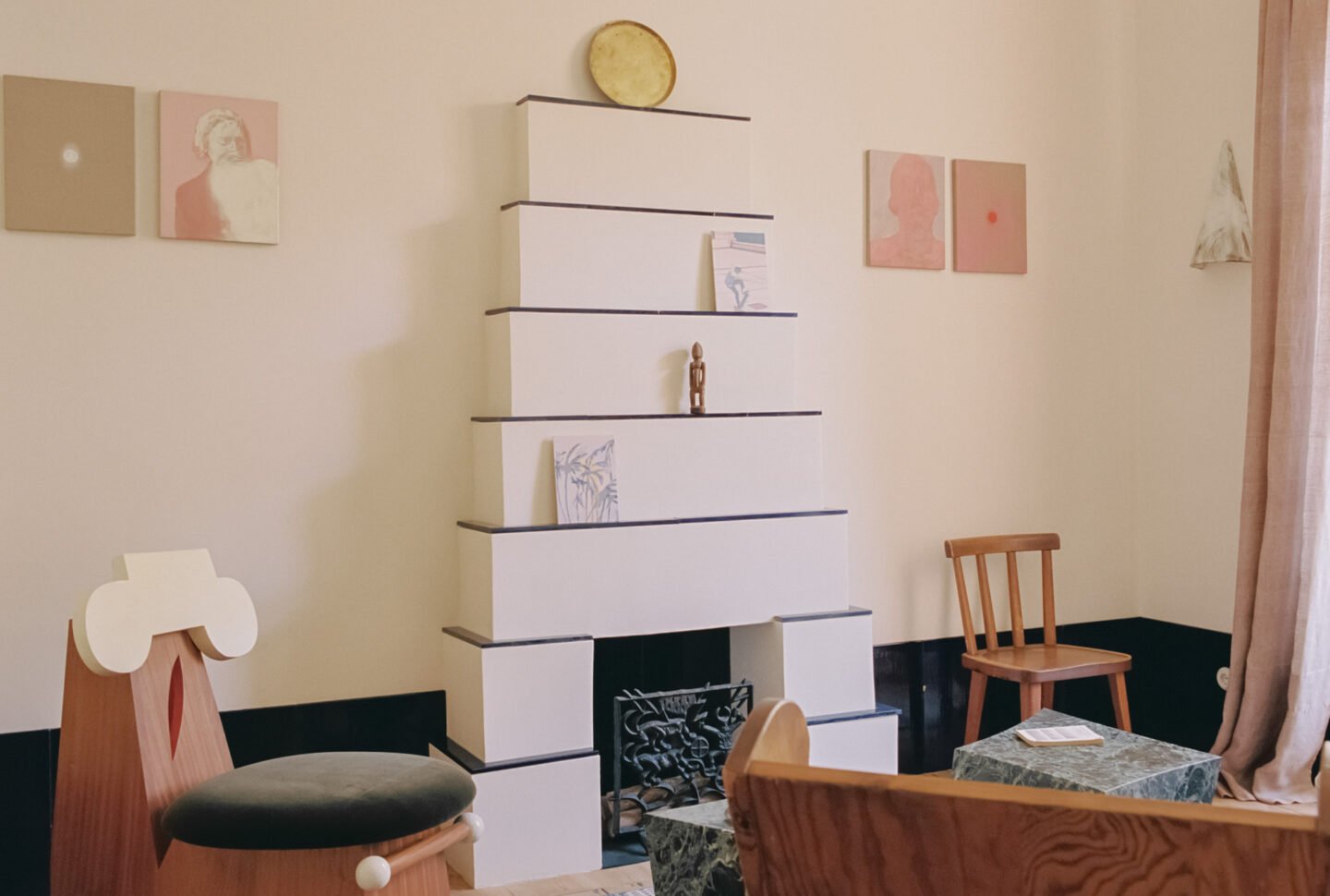
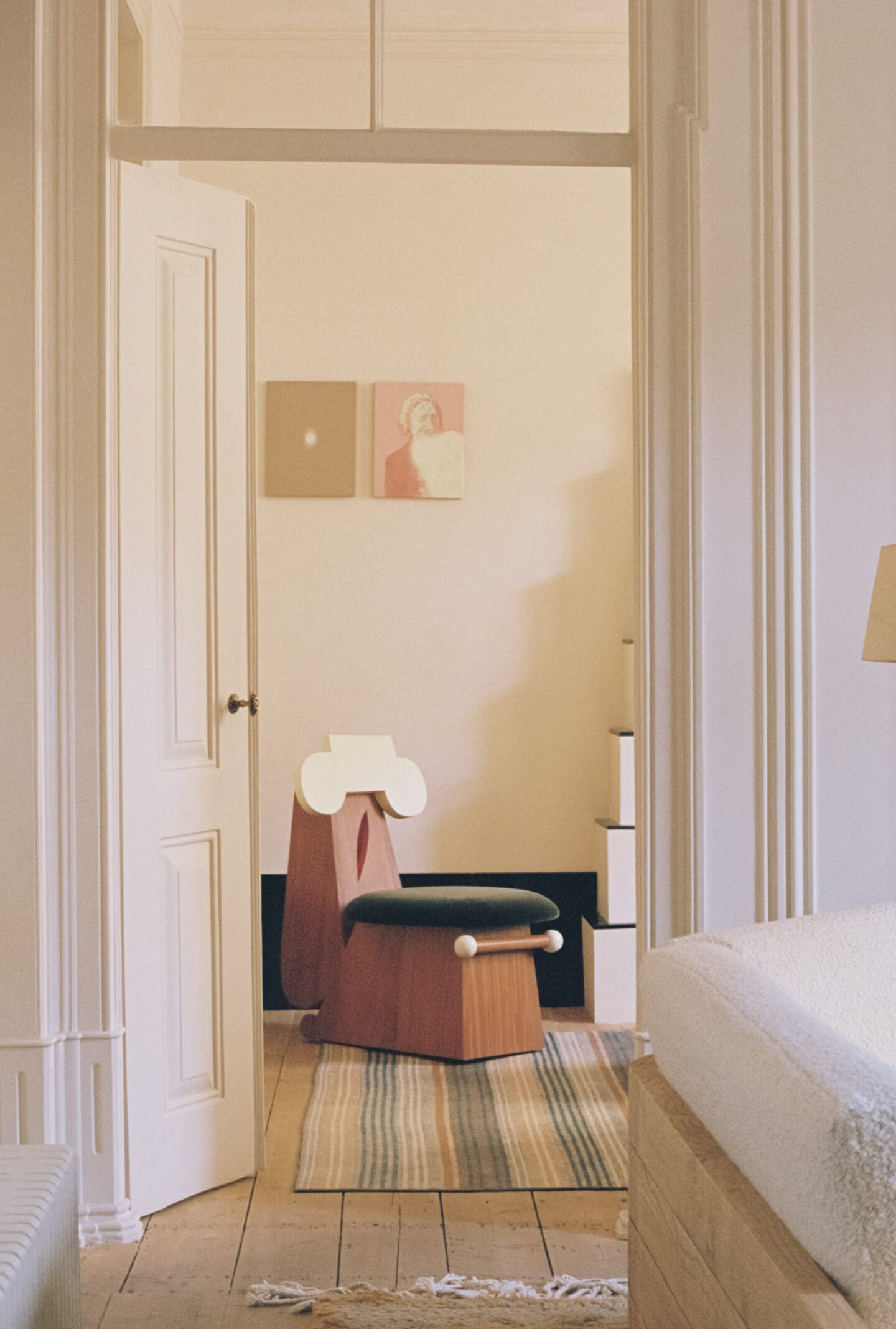
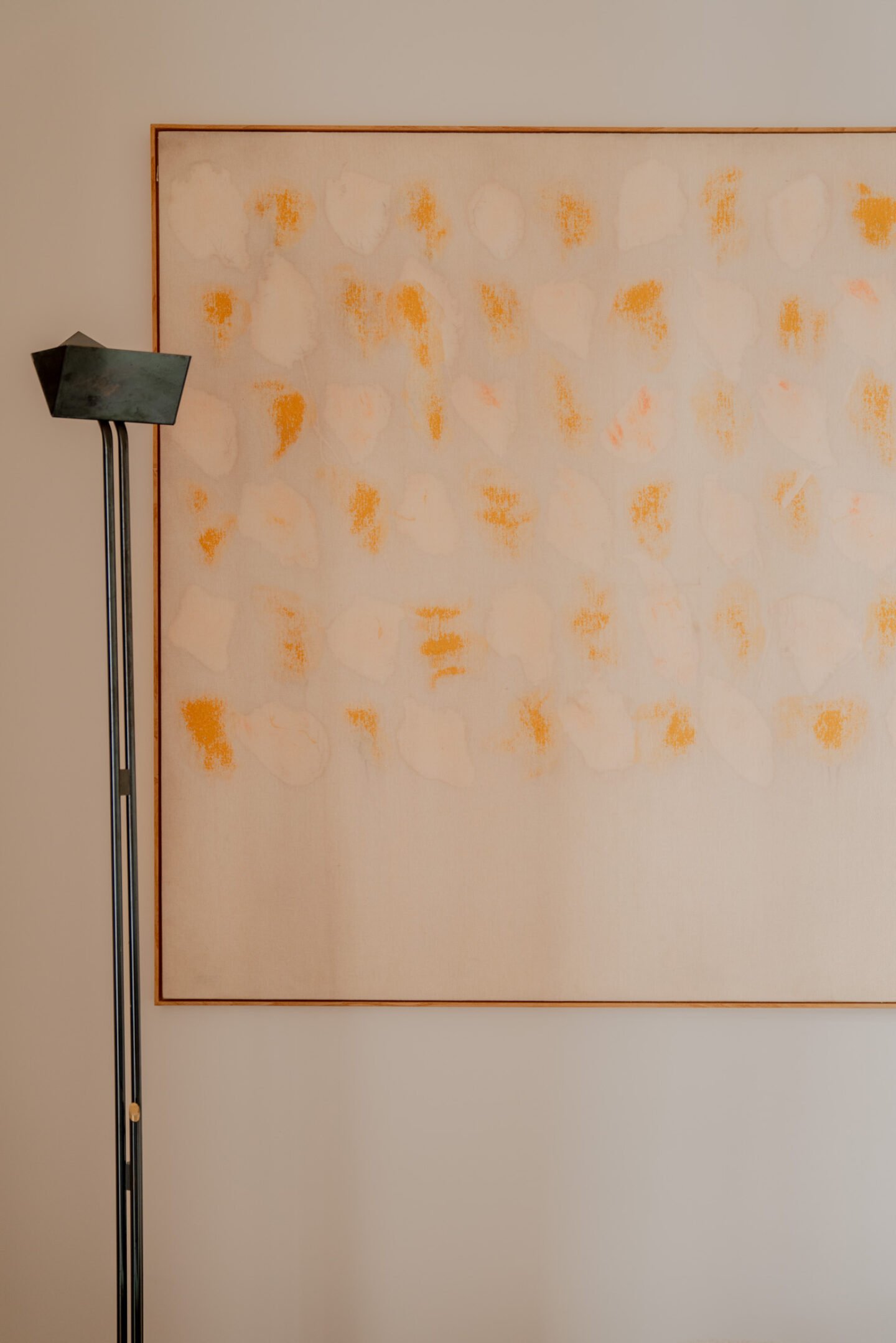
The artists you work with showcase a variety of mediums and methods. Would you say there is a curatorial line that ties together the designers and makers you choose to work with?
Definitely. Although the people we represent are all different, what connects them is a connection to the craft. We make sure they truly understand and are engaged in the maker’s approach. For instance, the artist Minjae Kim works closely with local woodworkers here in Portugal, and it’s similar for Garance Vallée and Charlotte Taylor. We usually start with some ideas and then try to create something in connection with local crafts. It is always a dialogue. It’s not only limited to craft—we have the same approach toward art. It doesn’t make sense to promote artists from far away here in Portugal. It’s still a small community here and we find it very important to support it.
How does it usually work? Do you first approach people and start developing a project or does it sometimes come from the other side?
I generally approach people as it is very specific: these artists and makers need to represent a specific aesthetic that’s in line with what we want to do and what we envision for a project. It’s usually people that we observe for many months or even years, making sure they will understand what we want to do.
Once you approach an artist or a designer, do you develop objects together or just oversee the process?
We just oversee it, adjusting when it’s needed from the technical or furniture perspective. For instance, when it comes to the comfort of the fabric or the finishing, the construction process, or the durability of the piece—we are here to advise. We never intervene when it comes to aesthetics, though. We let the creatives go as far as they want. Sometimes we are not certain something will work from a commercial point of view, but we are always keen to try.
When it comes to your own creations, what would you say your main visual references are coming from?
It’s definitely a wide range of different inspirations as we like to mix styles from classical to contemporary. Because we also work as curators, we need to have a very open mind about what is aesthetically pleasing. In terms of architecture, our main references come from Portugal. There have been so many brilliant architects here, such as Álvaro Siza or Eduardo Souto de Moura. When it comes to interior design, due to our French background, our interior references come primarily from there: Robert Mallet-Stevens, Jacques-Émile Ruhlmann, and many others who inspired the classical way and eventually became iconic. For furniture, we love to use references from Sweden, for example, the Swedish designs from the twenties. Then again, the furniture design from the 50s and 60s. With all these inspirations, we try to come back to the source, with craftsmanship in our minds and the resources we have. As a result, we try not to make pieces that are too complex or overly functional. We prefer to create a simple piece that stands out with its sophisticated finish or quality.
You also collect pre-owned pieces and there are a lot of them in the apartment. What do you look for when choosing a vintage design?
Again, it’s a very wide range of objects and styles, coming from France, Italy, Sweden… What matters to us is if the object is truly unique. We like it when the shapes are funny or unusual for the time in which they were produced. Sometimes, it also comes in contrast with the materials used. However, we mostly do it because we have a purpose for a specific piece. We know when we see a piece and we want to use it for a project or for a new show. We have a bigger narrative in our minds that connects us to different pieces we see on auctions.
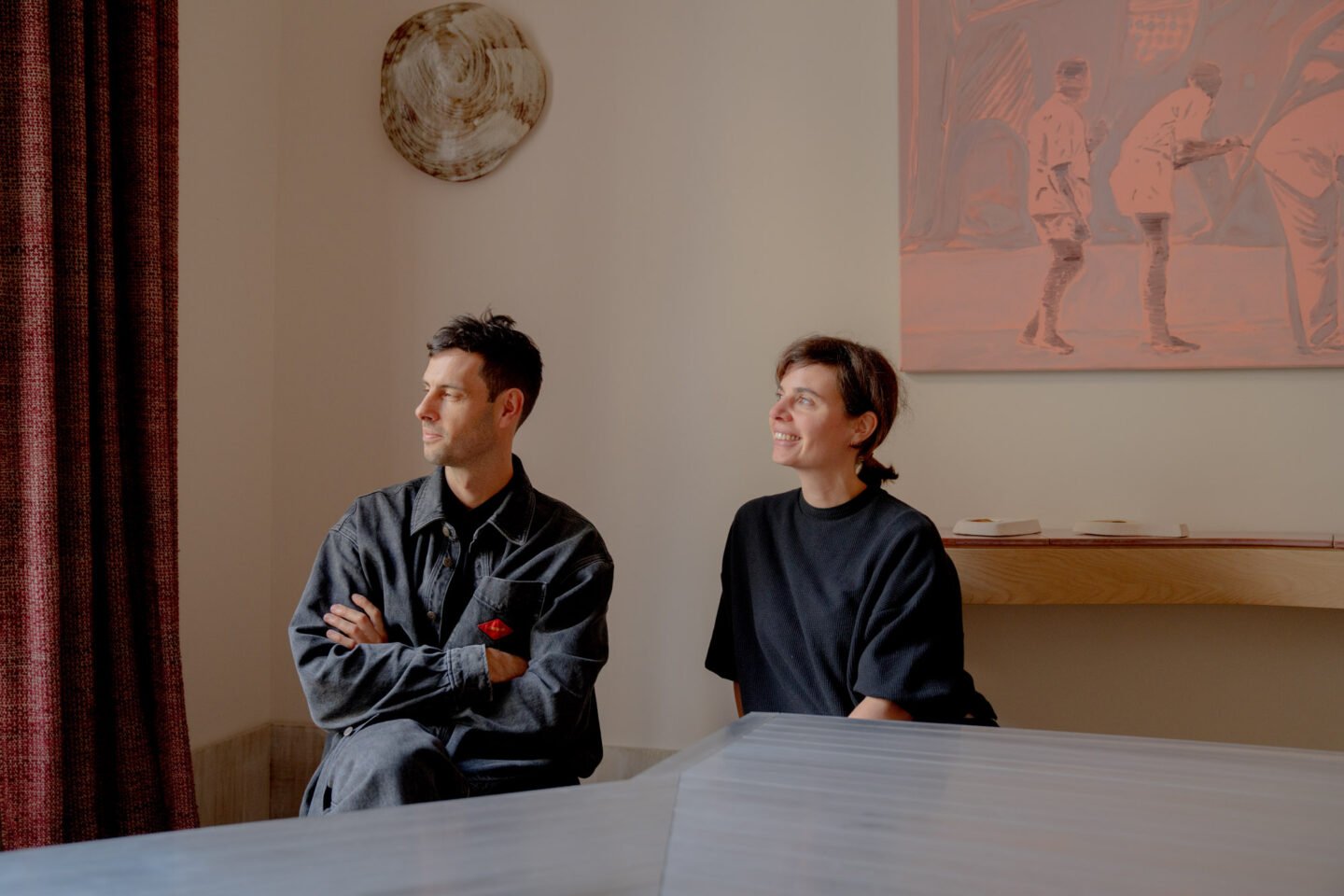
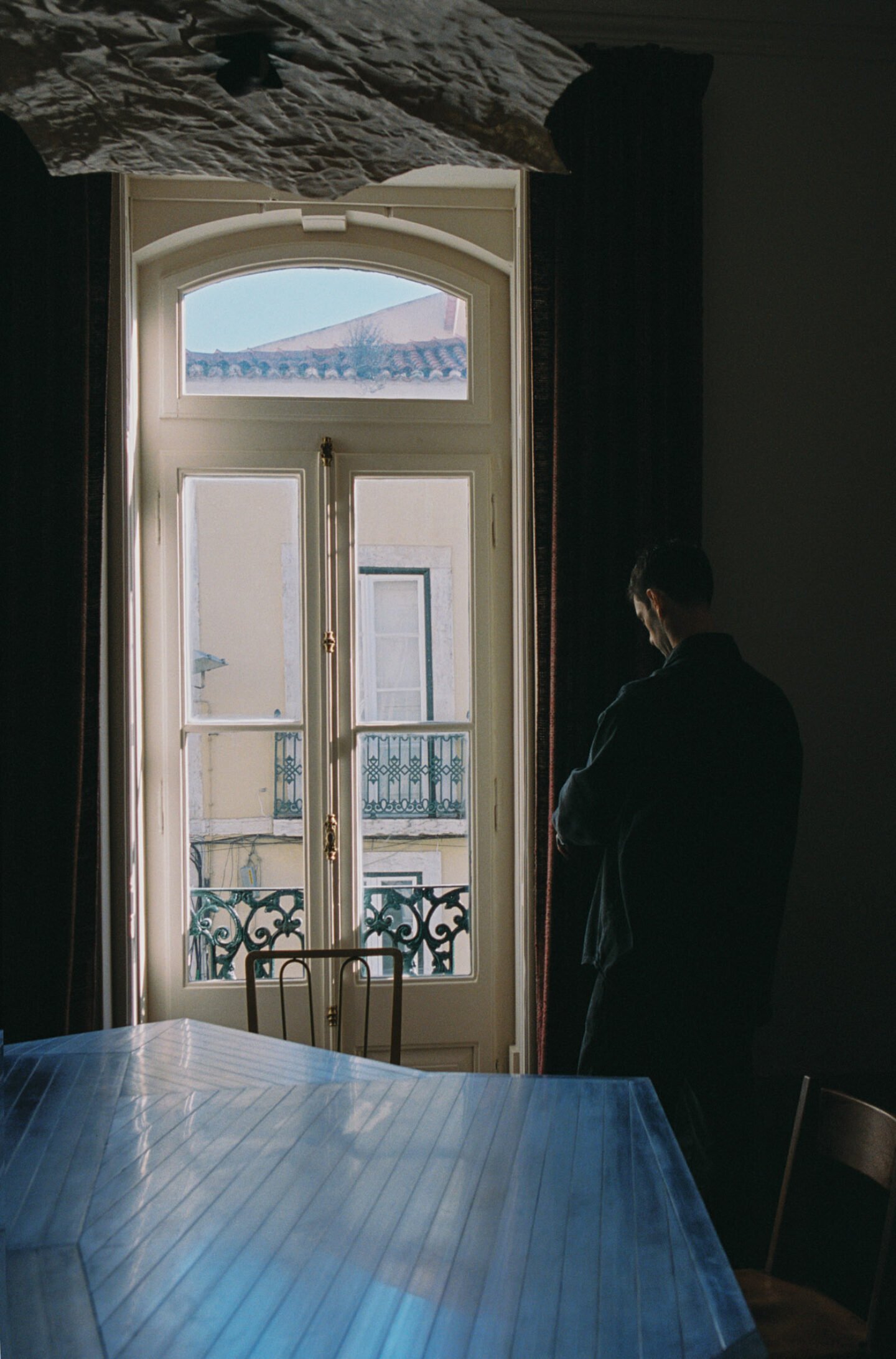
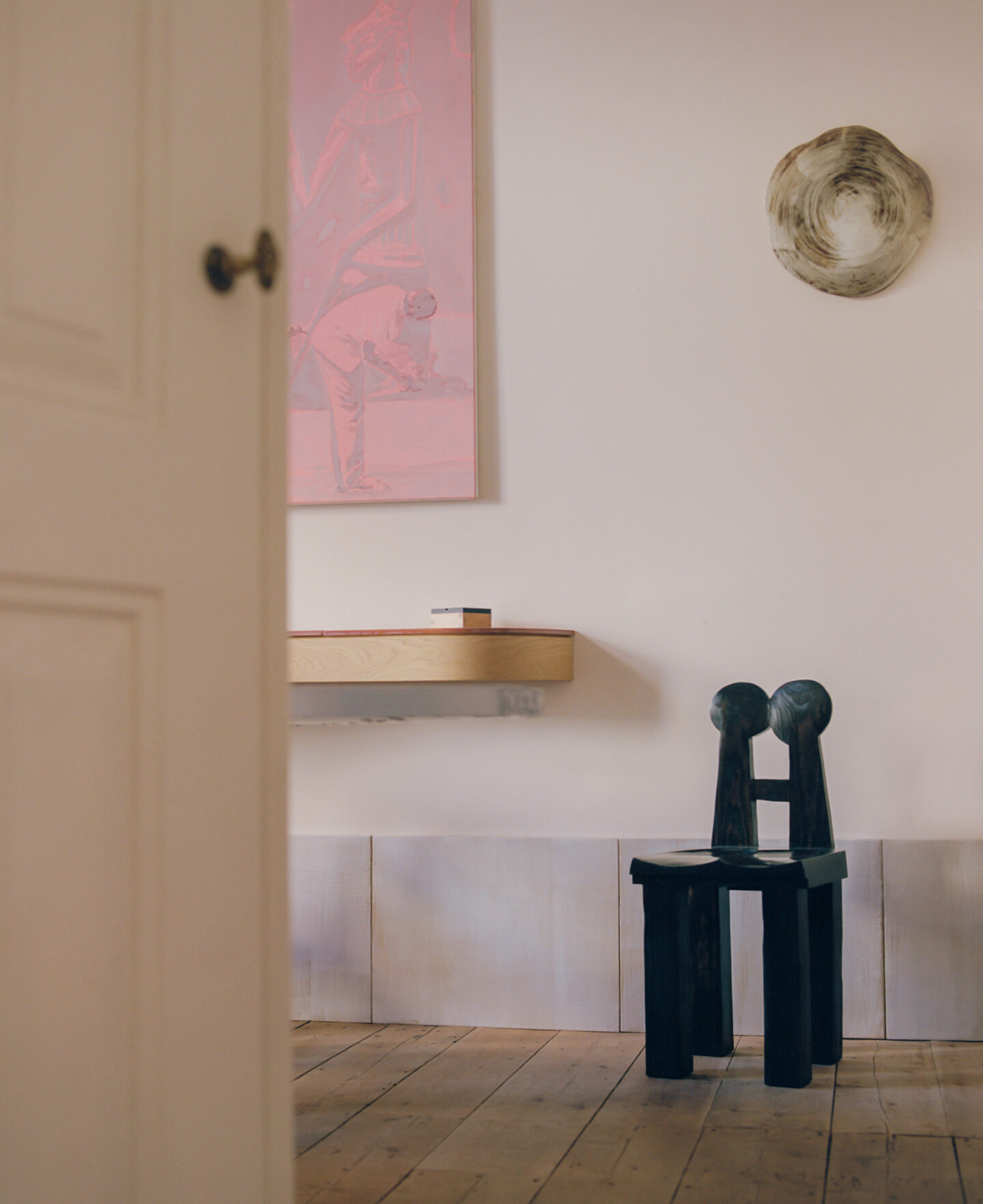
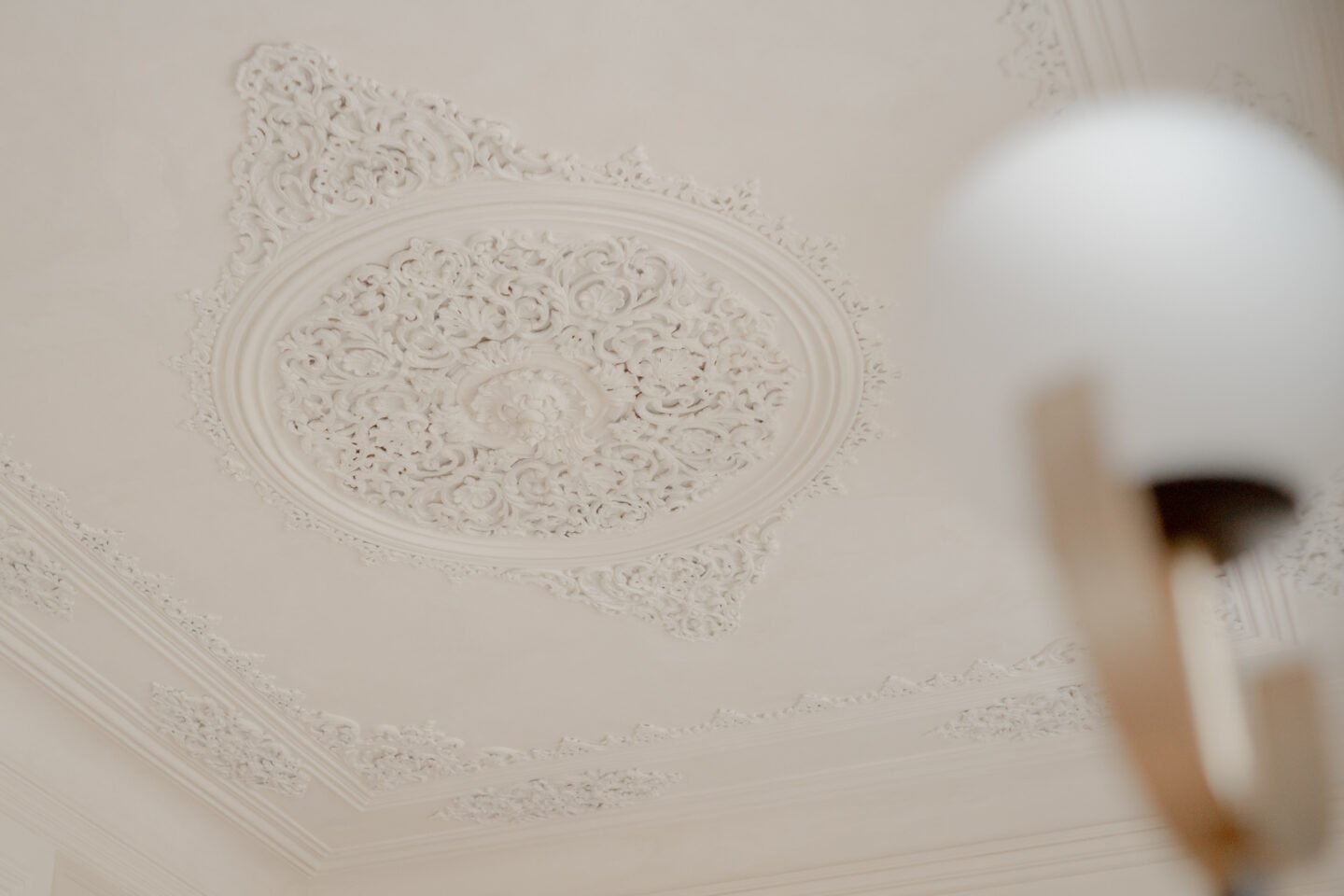
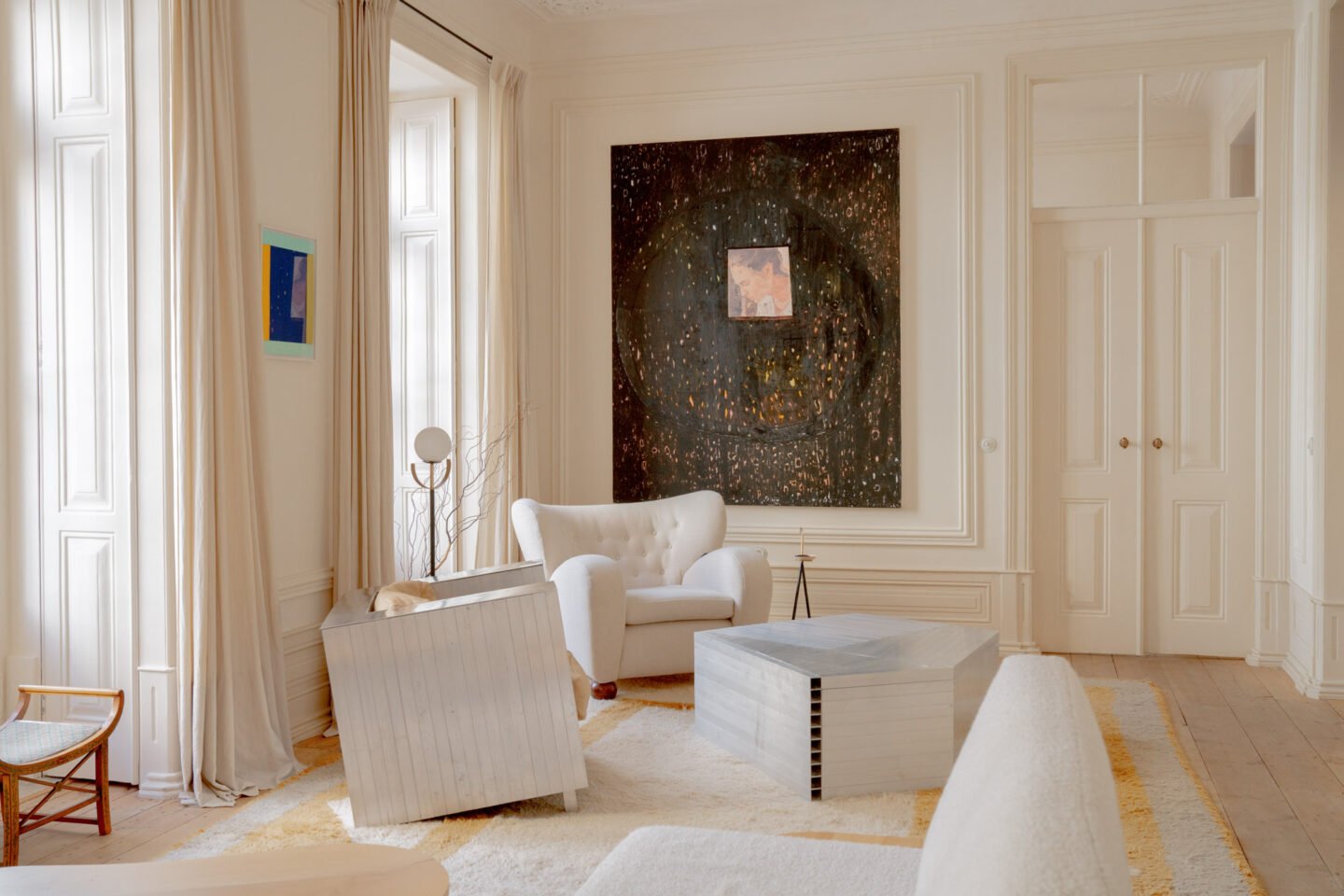
Outside of the architectural design world, where else do you find inspiration and the creative drive?
Books, of course—lots of French literature. Right now, I am reading Les Pierres Sauvages, by Fernand Pouillon. It tells about Cistercian architecture and is a diary of a monk who builds a monastery. I really like this construction period of making beautiful monasteries according to Cistercian principles. The idea was so radical and so pure, and when you actually experience this architecture it feels timeless. Another book I’m reading is L’Hôtel du Nord, by Eugène Dabit. It’s about a hotel in Paris near Canal Saint-Martin and discusses the stories of the guests visiting it. We used to live in that area, and it’s interesting to read about how it was back in the 50s. I’m also reading Philippe Sollers, a radical French writer who influenced many others in his career. I really recommend his books.
Besides literature, we also like to go places and experience architecture that is currently booming in Portugal, and to see the beautiful, inspiring landscapes across the country.
You also mentioned before that Lisbon became a hub for creativity. However, it’s still not an obvious choice for design. Can you say a bit more about what is currently happening here?
I think it’s a very complicated city in terms of creative initiatives, as there is not so much support from the city to develop a new business and rent is getting higher and higher. Even if Lisbon is developing at a fast pace now, there are still a lot of difficulties for new creatives. However, for designers with a more established practice and a budget to invest, it’s a relatively easy place to live. In that sense, Porto is different. It’s more connected to craftsmen, there are more resources and the community is stronger, more connected. For me, Lisbon is more of a hub where you meet people, find connections, and you can showcase what you do, but it’s not a city where the creative process is very vibrant. However, with the massive influx of tourists and the rising costs of living, we don’t really know where Lisbon is heading as a city. There’s a shift happening, but we don’t know yet what it’s going to be.
I guess we will have to wait and see.
Yes, definitely.
What exciting things are coming for Garcé & Dimofski in the near future?
A lot of things! We will have several new collaborations with other galleries. We are trying to shift our own practice into something more artistic. We won’t create functional objects but rather we will give more expression to materials and shapes. For example, we are now working with a gallery in India named Gallery Æquō, for which we design pieces that will be produced together with local craftsmen in India, mainly in the textile field. We are also collaborating with Francis Gallery, for which we are going to make ceramic pieces that will explore materiality, the different shapes, and the use of glazes in a more sculptural way. In the area of architecture and design, we are also working on residential projects in France and Switzerland.
Images © Monika Mroz for Ignant production
